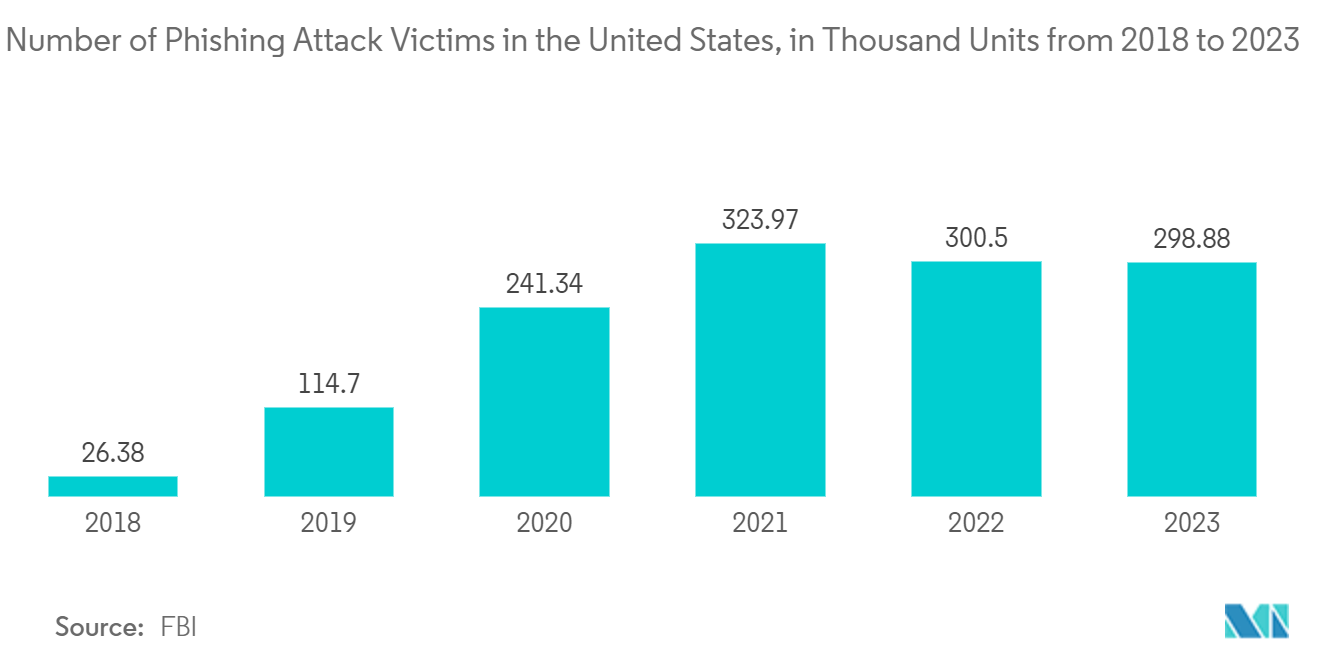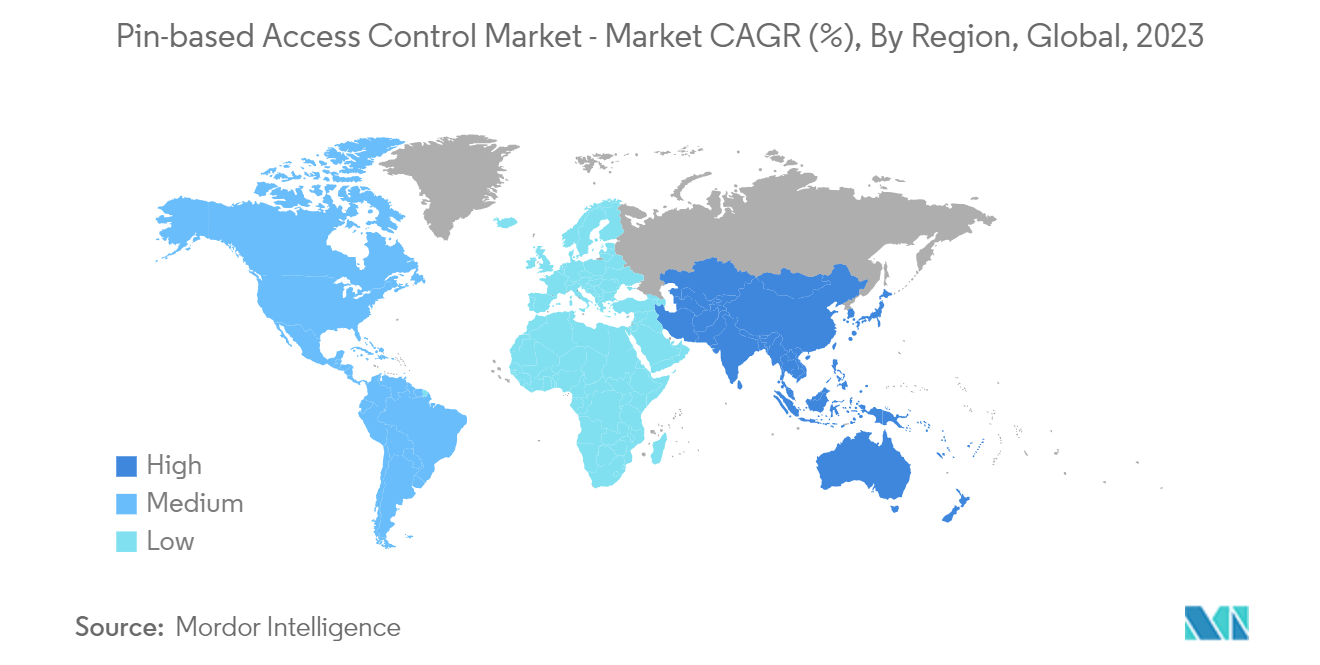Market Trends of Pin-based Access Control Industry
The Large Enterprises Segment is Expected to Hold a Significant Share in the Market
- Pin-based access control systems have become the preferred way to manage access to large enterprises such as commercial buildings, offices, and businesses. Pin-based access control systems can be built to restrict physical access to IT rooms where sensitive information is stored. The market for pin-based access control systems is expected to grow due to increasing safety consciousness, the growing demand for high-level access control systems, and the adoption of access control devices in commercial organizations.
- The United States is an early adopter of access control systems owing to the presence of several larger market players. Large enterprises, such as financial centers and banks, enterprises, hotels, malls, and retail stores, have adopted pin-based access control systems in the United States. Furthermore, several offices have made it mandatory for their employees to use pin-based access control to enter the IT premises and use the systems assigned to them.
- With advancements in technology, organizations are implementing smart door locks to prevent theft and to increase the security of sensitive data. Due to the increasing demand for smart door locks with biometric technology, key vendors are focusing on new product launches and expansion of their product portfolio. For instance, in March 2024, TCL unveiled the K9G Plus, a cutting-edge smart door lock. This lock features advanced technology, including dual cameras and 3D structured light for precise facial recognition. Additionally, it has a spacious 4.5-inch inner touchscreen and a high-capacity, long-lasting battery. The device offers a range of unlocking methods, such as facial recognition, fingerprint scanning, password entry, card swiping, key insertion, and NFC technology.
- Moreover, as commercial door lock systems with keypads provide advanced security and eliminate the requirement for physical access keys, several property owners and senior management professionals alternate the PIN code from time to time to ensure that only authorized personnel can access the space. Such demand will also bring huge interest in pin-based access control systems in large enterprises globally.
- In November 2023, AWS unveiled a new palm-based identity service designed to enhance the security of physical spaces and digital assets for large enterprises. This innovative service aims to reduce operational costs while offering added convenience for users, all the while prioritizing the protection of personal data. The cutting-edge palm recognition technology employed by this service leverages advanced artificial intelligence and machine learning to generate a unique palm signature that can be linked to various identification credentials such as badges, employee IDs, and PINs.

Asia-Pacific is Expected to Witness Significant Growth
- Asia-Pacific is expected to be the fastest-growing region during the forecast period. The growth is attributed to the increasing demand for access control systems across countries like China and India. China dominates the market due to its expanding construction sector, many manufacturing industries, and a growing crime rate. In addition, China is home to major pin-based access control key vendors, such as Dahua and Hikvision.
- The growing industrialization leads to a high demand for securing assets and data. Urbanization in the region is driving the need for access controls in residential and commercial areas owing to security concerns. Technological advancements and digitalization drive the demand for solutions across organizations. Furthermore, the cumulative adoption of smartphones and mobile computing devices is expected to drive the adoption of pin-based access control across Asia-Pacific.
- India is witnessing an increase in pin-based access control systems in various sectors, including hotels, government institutions, corporate offices, residential buildings, and retail stores, primarily due to the rapidly growing security concerns and increasing crime rates. Several key players are developing devices as per the Indian smart home requirements under the Government of India programs, such as Digital India and Make in India.
- Further, growing theft and robberies in India drive the demand for smart door locks. A November 2023 report titled 'Live Safe, Live Free,' commissioned by Godrej Locks, revealed that more than two-thirds of respondents in five major cities, namely Mumbai, Delhi, Kolkata, Bhopal, and Bangalore, already employ smart locks to secure their homes. These cities were chosen based on their vulnerability, as highlighted in the National Crime Record Bureau's data.
- As technology advances, Australians increasingly turn to digital door locks as a secure and convenient solution for access control. With the growing popularity of smart home technologies, smart door locks have become essential to residential areas. The cost-effectiveness factor has contributed to the growing popularity of pin-based door locks in Australia. Other countries in the region also adopt pin-based access control systems, driven by the need to protect the property and data.


